Smelly Baby Chick Won't Eat or Drink and Won't Lay Down, Can't Poop

Spring is but around the corner and with many craven-keepers waiting for delivery of day-old chicks, this a good time to take a look at some of the most common problems that occur in baby chicks. Some of these problems can arise in chicks that are hatched at abode, besides. In either case, it is a practiced thought to have your Craven Commencement Aid Kit stocked and ready for activity before babe chicks arrive. The five near common problems in baby chicks are all hands treated.

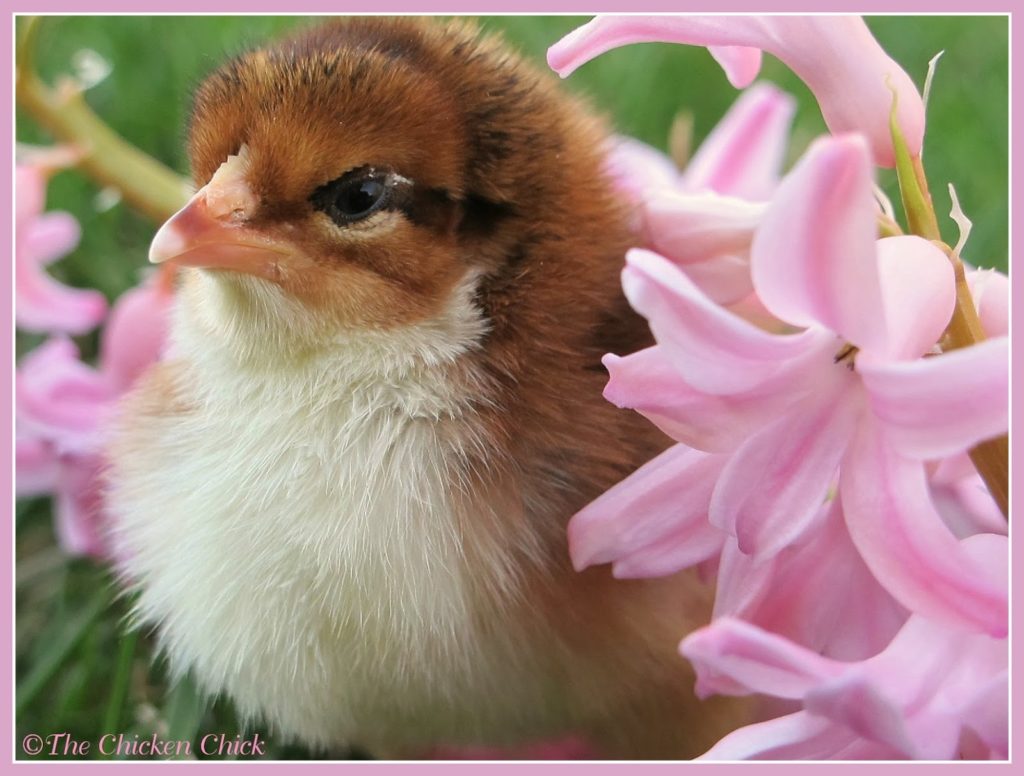
Problem #1: Dehydration
1 of the last things a chick does prior to hatch is absorb the egg yolk into its torso through its omphalos. The yolk is Female parent Nature'southward protein drinkable- it nourishes a chick for two-three days after absorption. The reason this is important in nature is because a clutch of eggs can have several days to hatch and the first chicks to hatch must sustain themselves until the hen is ready to venture out with them to find food. It is possible to ship baby chicks through the mail service due to the nutrition provided past the yolk, even so, chicks can nonetheless arrive at their destination dehydrated for various reasons.
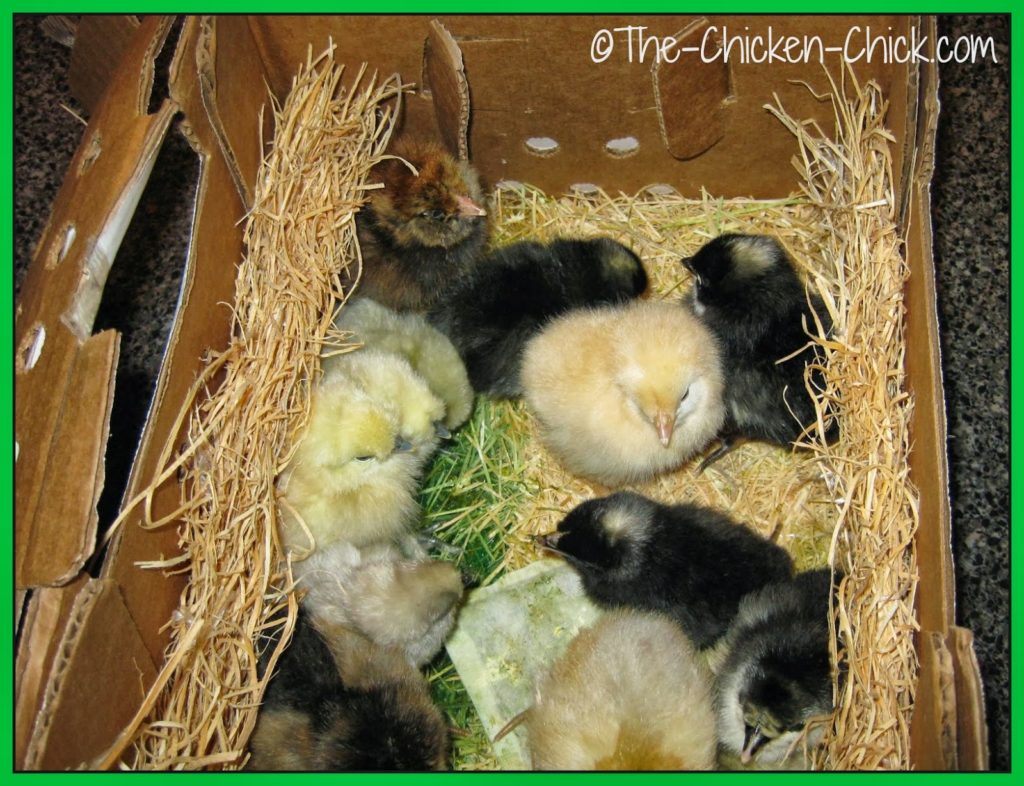
Dehydration Solution
Upon arrival, information technology's helpful to rapidly, gently dip each chick's beak into the h2o to encourage them to drink. If chicks had a crude trip and look wilted, a vitamin/electrolytesolution tin can requite them an energy boost and assistance re-hydrate them. A sports drink such as Gatorade volition suffice in a pinch, but it'due south ameliorate to use the vitamins & electrolytes in the h2o.

Trouble #ii: Gummy Butt
Pasty barrel, aka:pasted vent or pasting-up is a condition where loose droppings stick to the down surrounding a chick'south vent. Pasty butt can be caused by stress from shipping, being overheated, besides cold or from something they have eaten. The vent should not exist confused with the chick's bellybutton. The vent is the expanse on a chick where droppings and eggs go out the body. The omphalus is not the aforementioned equally the vent. Day old chicks may have their umbilicus surface area crusted over a bit and this scab should Not be removed every bit it is a remnant of hatching, which volition dry upwardly and fall off on its own. Pulling it off tin can impairment the chick, hazard infection and fifty-fifty cause disembowelment. When droppings build up and form a blockage around a chick's vent, chicks can die if it is not removed.
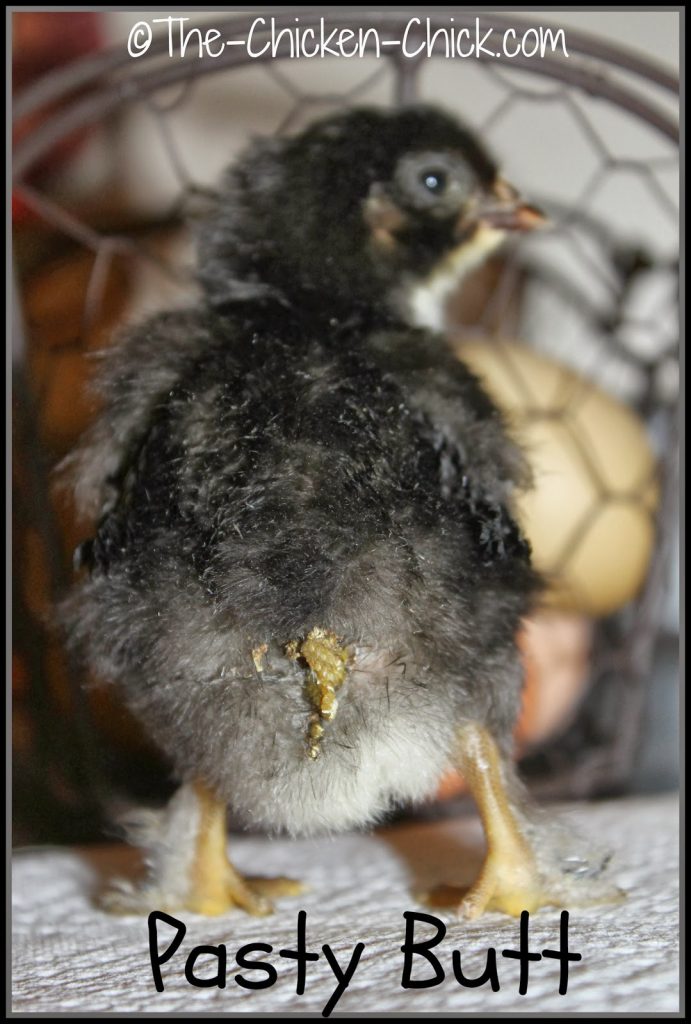
Pasty Butt Solution
All chicks should be checked for pasty butt upon arrival. If debris are caked onto the vent area, they can be loosened with warm water on a damp washcloth or paper towel and gently removed. Extra care not to pull the droppings or downwardly because the skin around the vent tin tear. After cleaning and drying the vent area, the application of petroleum jelly or triple antibiotic ointment tin can forbid the droppings from sticking to the down. Olive oil is not recommended as it tin get rancid.
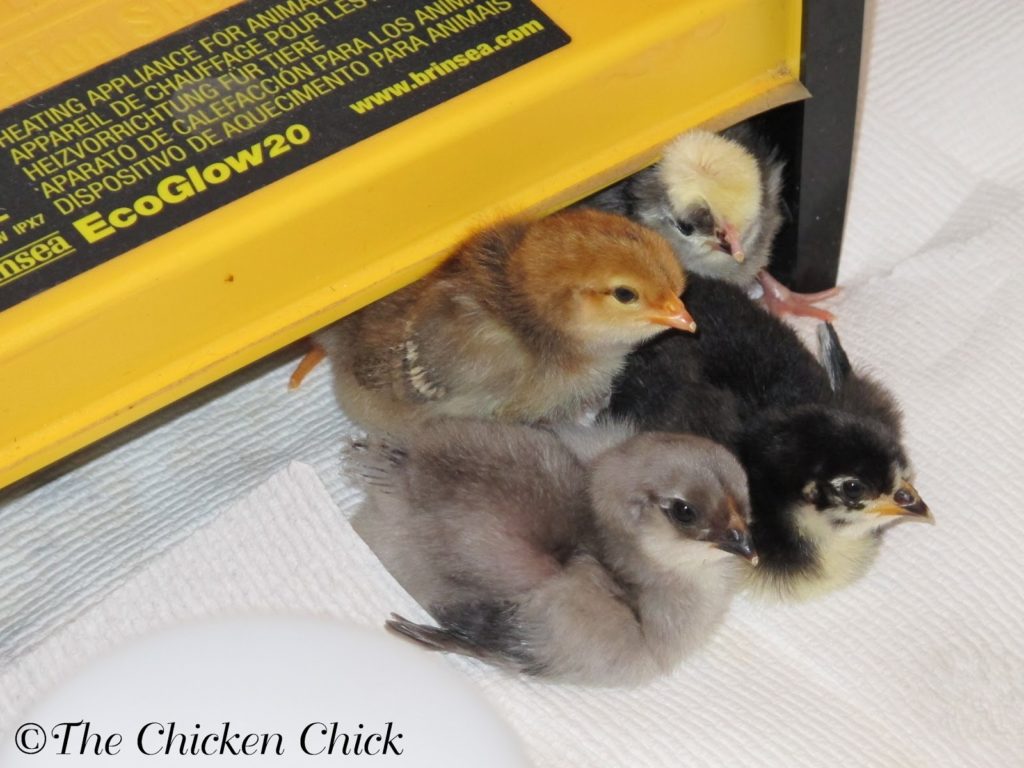
If several chicks develop pasty butt after a few days in the brooder, the brooder may exist also hot and the temperature should be adjusted. According to Gail Damerow's book, The Chicken Health Handbook, sometimes the brand of feed poses a digestive problem for chicks. Pasty butt tin can be remedied by mixing scrambled eggs in with their starter feed and if that clears things upward, change brands of feed.
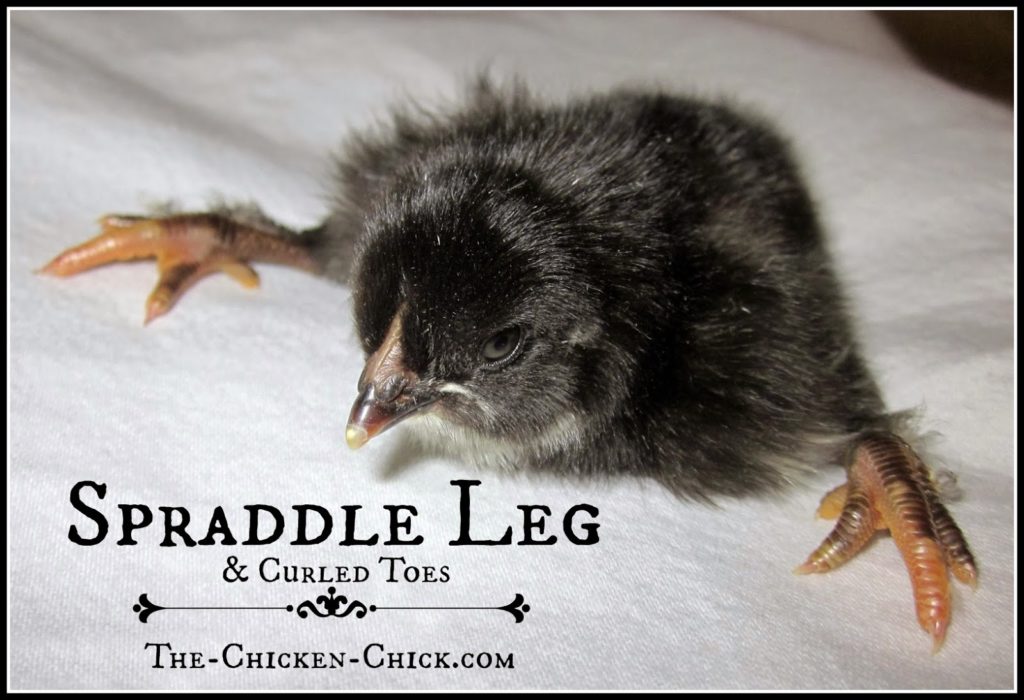
P roblem #iii: Spraddle Leg
Spraddle leg, also known as splay leg or splayed leg is a deformity of the legs, characterized by feet pointing to the side, instead of forrad. Spraddle leg makes walking hard, if not incommunicable and can be permanent if left uncorrected. One cause of spraddle leg is slick floors that result in chicks losing their footing. The legs twist out from the hip and remain in that position unless corrected.
Other causes are: temperature fluctuations during incubation; a difficult hatch that makes legs weak; a leg or foot injury; brooder overcrowding; or a vitamin deficiency.
Chicks arriving with spraddle leg volition be obvious and should be treated immediately. The sooner it'south addressed, the sooner the bones can heal in the proper position.
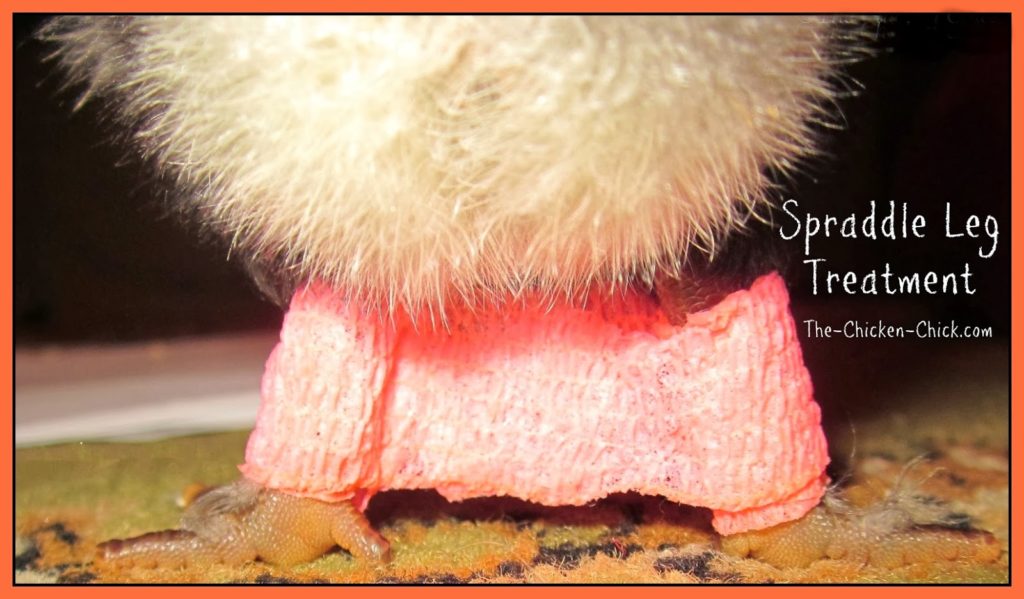
Due south praddle Leg Solution
Some causes of spraddle leg cannot be avoided, but some tin can. I way to preclude spraddle leg is to avert using newspaper or other slick surfaces for brooder bedding. Upon discovery, the legs should be hobbled (bound together in a particular way) and physical therapy provided until the chick can stand up on its own. Much more than about hobbling and therapy on my blog here.
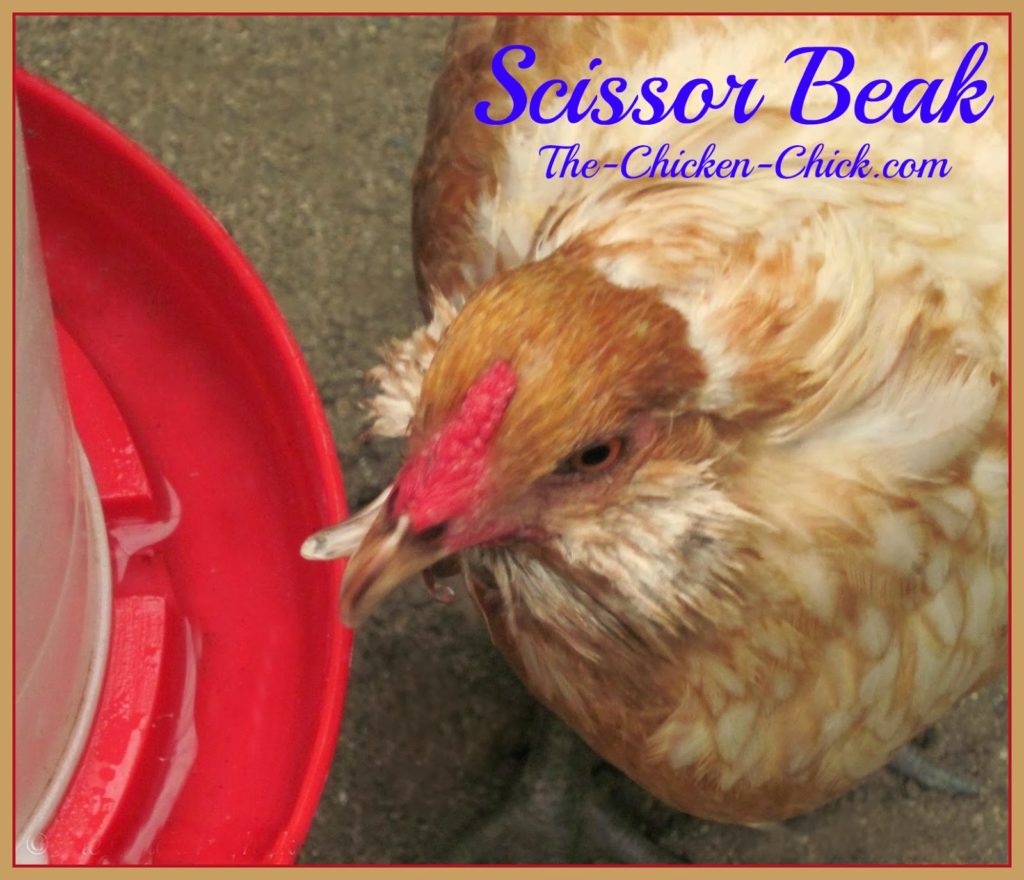
Problem #4: Scissor Bill
Scissor pecker, aka: crossed beak or crooked nib, is a condition characterized by the top and bottom beak halves failing to align properly. It tin be caused past genetics or the inability to maintain the beak'southward length and shape by normal honing on rocks or other hard surfaces. Scissor bill is not an automatic bid for euthanasia; most chickens with scissor beak can alive normal, happy lives with a few minor accommodations. Scissor neb in new chicks can be very subtle as with my Easter Egger, Ethel. It normally worsens over time.
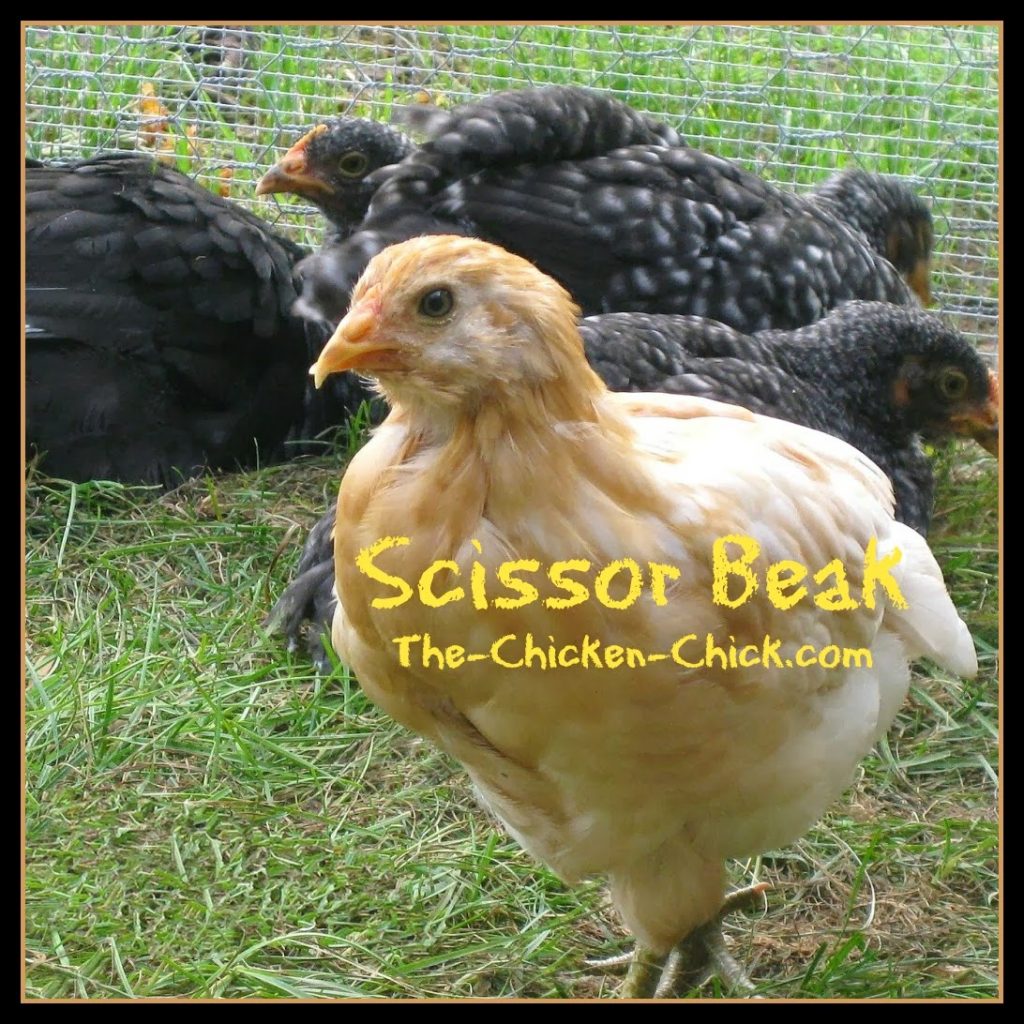
Scissor Beak Solution
There is no at-home set for scissor beak, the only handling is surgical and I have but heard of one example in which information technology was performed. Baby chicks with scissor neb may accept difficulty eating or sometimes other flock members volition prevent them from accessing the feed. If that is the instance, the chicken will need to exist put in a safe place where only she can admission the feed.
Crossed beaked chickens cannot choice up pieces of nutrient using both halves of their beaks as a utensil, they accommodate by scooping food into the bottom half of their beaks. I find that information technology helped to put Esther's feed in a deep dish, raised upwardly closer to chest level so it had less distance to travel to accomplish her tongue. This small adaptation is sometimes all it takes to help crossed-beaked chickens eat. Some chicks detect it easier to swallow moisture feed that is the consistency of oatmeal. Grinding up feed in a java grinder and adding water to make a wet brew may help severely scissor-beaked chickens. More than on this subject field and trimming scissor neb on my blog hither.
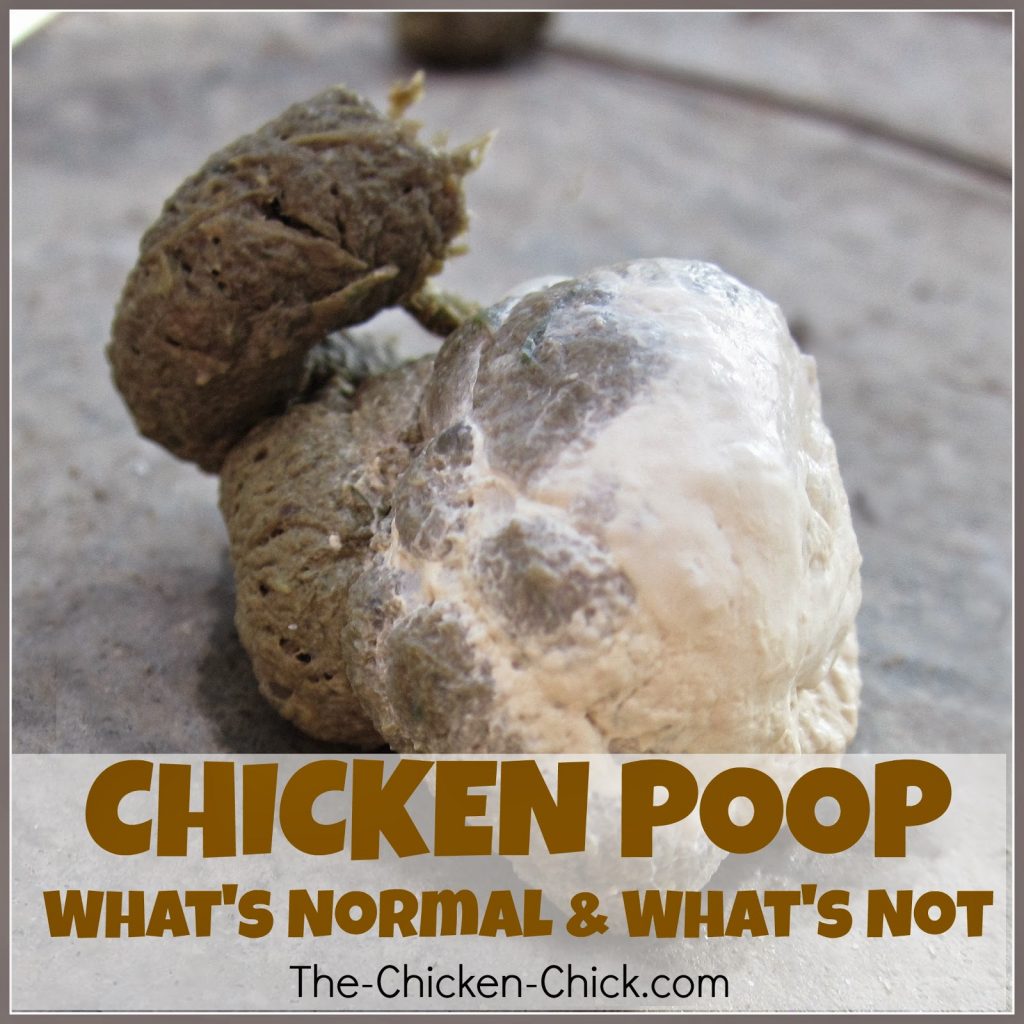
Problem #5:Coccidiosis
Coccidiosis is the most common cause of death in baby chicks. Coccidiosis (aka: cocci) is acommon intestinal affliction, caused by several species of parasites that thrive in warm, moisture conditions such as a brooder and is transmitted in droppings. The most common symptoms of cocci in chicks are: diarrhea, claret and/or mucous in debris, languor, listlessness, pale pare colour, loss of ambition and failure thrive/grow. Cocci can very quickly wipe out many chicks in the same brooder.
(Visit my blog mail here to come across a photo of abnormal droppings acquired by coccidiosis.)
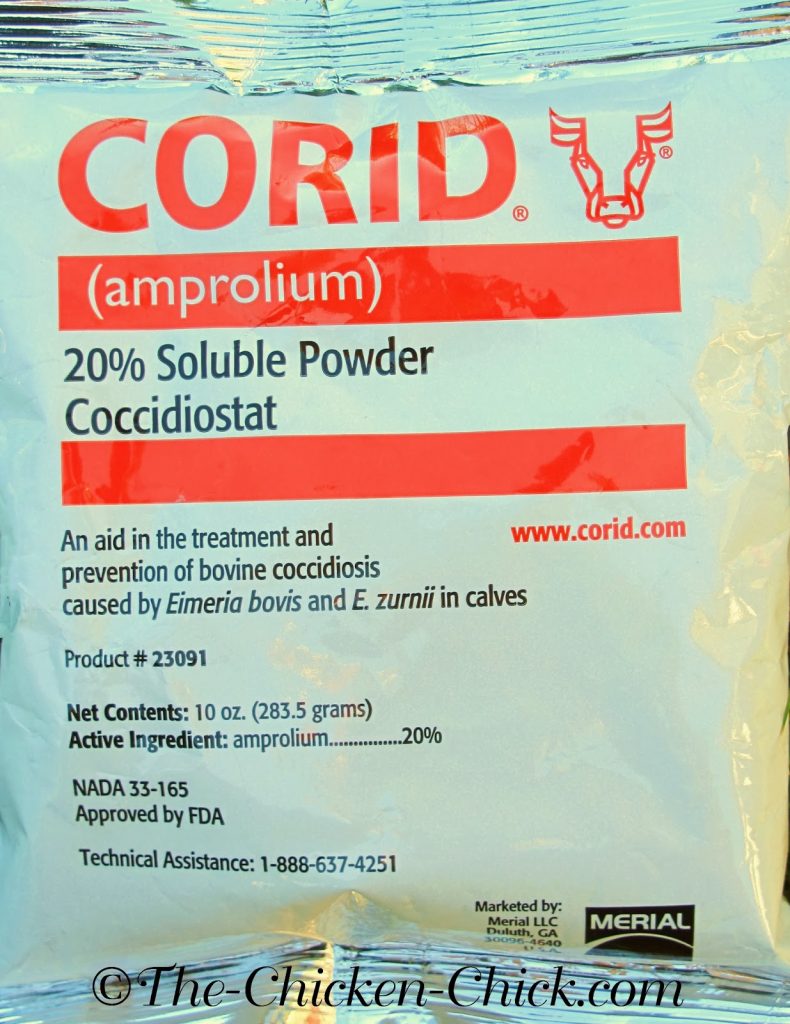
Coccidiosis Solution
Prevention is the central to controlling coccidiosis. Keep brooders reasonably clean and as dry every bit possible. Keep waterers free from droppings and bedding. Using a riser or platform for traditional waterers can assistance keep debris out of the h2o. A better choice would be to use poultry nipple waterers, which can be made or purchased. Learn most caused amnesty, innoculation and why you shouldn't demand medicated starter feed for chicks on my blog here. Treatment for an outbreak of coccidiosis can exist plant here.
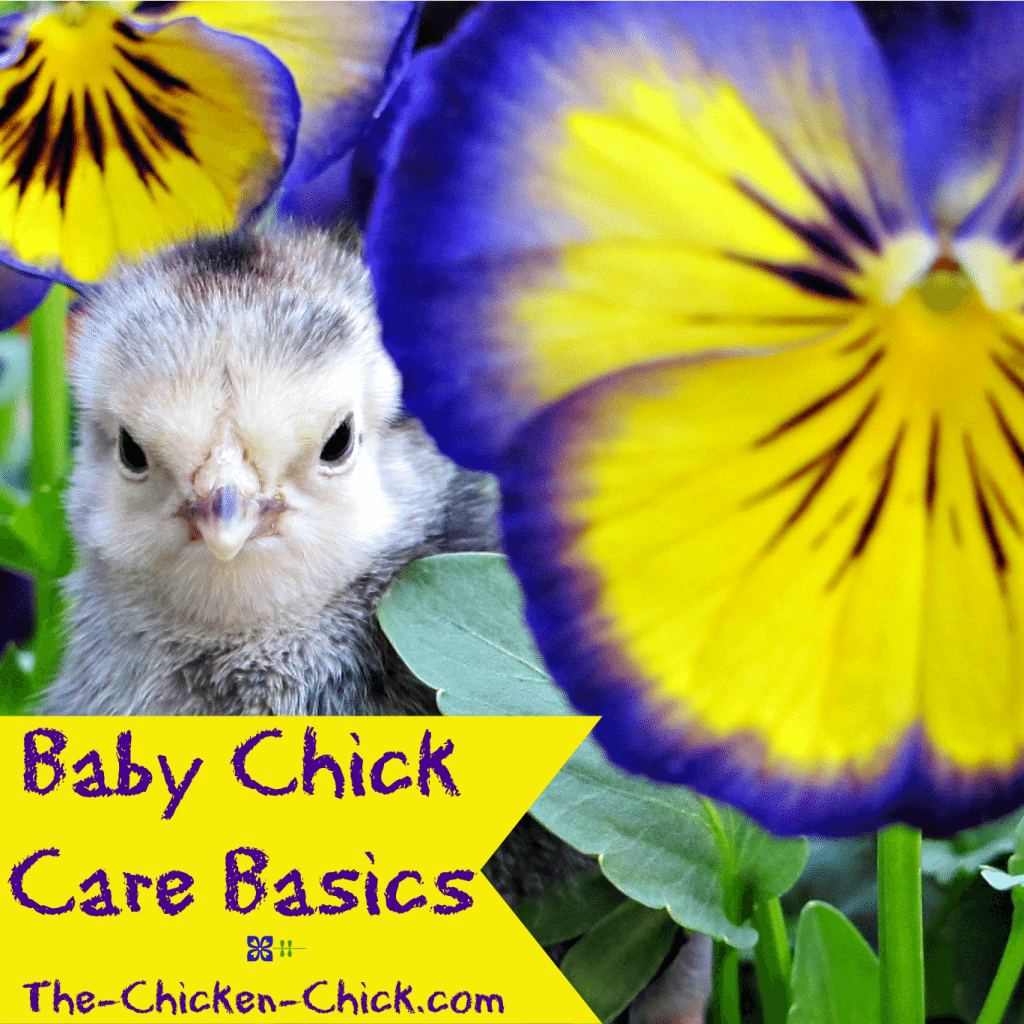
Nearly other ailments and afflictions that can befall baby chicks such equally respiratory illnesses and Marek's affliction commonly don't, so don't worry unnecessarily virtually them. Keeping a clean brooder and clean h2o both become a long way towards keeping baby chicks healthy and happy. Much more than information about raising baby chicks tin can be plant on my article hither.
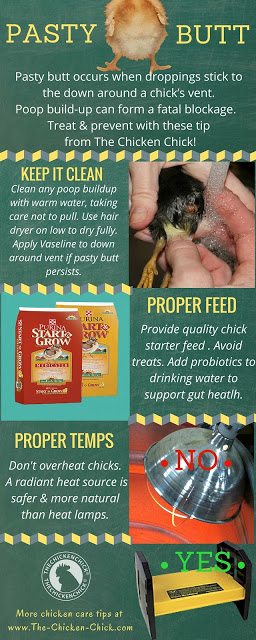

Y'all May Besides Like
Smelly Baby Chick Won't Eat or Drink and Won't Lay Down, Can't Poop
Source: https://the-chicken-chick.com/5-common-problems-in-baby-chicks-wi/